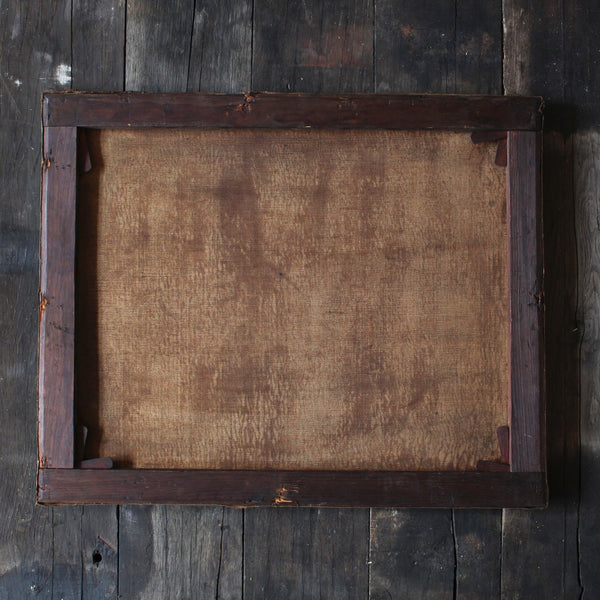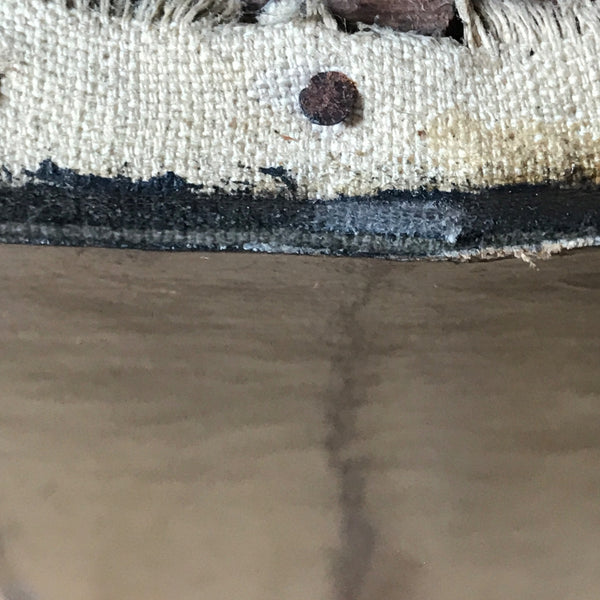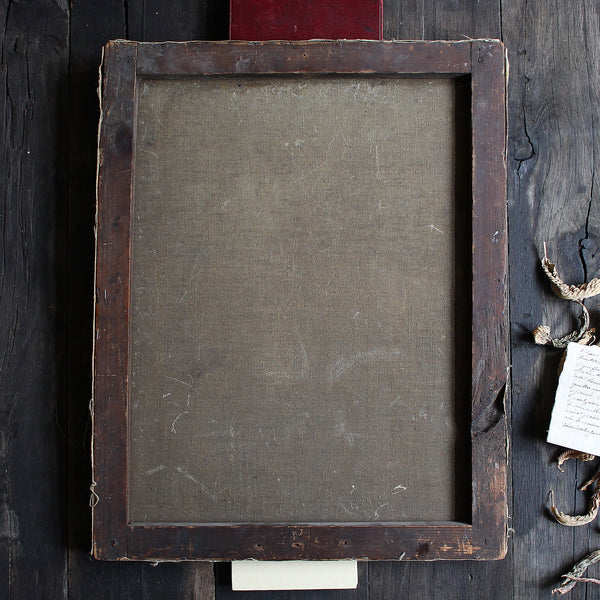Author: Andy Shield
One of the questions I often get asked by customers and also other dealers is how to identify whether a work is an original antique oil painting or a reproduction. At times it’s quite obvious but it’s by no means an exact science and the only way to approach it is to gather all of the evidence and form an educated opinion.
Here are a few pointers on how to identify an old oil painting and in this article, I'll cover works on canvas.
Darkening of the canvas
The back of a painting will generally yield more information than the front, so the first thing to do is turn it over. Older original canvases tend to darken with age.
Caution: Unfortunately, there isn’t always a direct correlation between how dark it is and how old it is. Also, many canvases, around half of those we hold here, are relined.

Relined canvas
Relining is the process of attaching an older canvas to a newer one for conservation reasons. Paintings were often relined during the 19th-century so you might find that yours looks quite old from the back but not nearly as old as it actually is. You can usually tell if it’s been relined by examining the canvas closely to see if there is more than one layer.
In many cases, the stretcher/strainer bars are rescued from the original, along with the nails, so this may provide another clue. Relining also often results in a flattening of any raised paint (impasto).
Caution: It’s been known that forgers have attached their forged copies to older canvases in an effort to make them appear older. Also, some oil paintings are created on paper and then laid on canvas and then later relined, which could confuse the eye. If you examine the image below, you can see how the varnished paper has been laid on top of a canvas. Note how the canvas is fraying, yet the paper is not.

Dark stretcher bars
Over the years, the design of European and US canvas stretchers has changed and they can provide a further clue as to the age of painting. How old does the wood appear? Are there any old hand-wrought nails? If it’s a few hundred years old, you may even find some handmade wooden dowels.

Caution: Plenty of artists have created their own stretchers over the years that may appear basic in construction and appear older than they are.
Craquelure
The front of a painting can also provide further evidence as to its authenticity as an old work. For example, old oil (and tempera) paintings will exhibit a fine pattern of cracks, known as craquelure. It’s worth examining these closely to see if they feel natural or artificially aged. It’s a little harder to spot them if a painting has been heavily varnished and the varnish has yellowed over time.

Caution: It’s possible to artificially create the appearance of craquelure, so do consult an expert if you’re unsure. Sometimes artificial cracking appears a little too consistent to be deemed natural.
Raised paint
It’s common for oil paintings to display raised paint, so hold the canvas flat and take a good look along the surface. Although do bear in mind that it’s also common for the paint layer to be entirely flat, particularly if it’s been relined.
Dots under magnification
If you feel you could be holding a modern print, one way to tell is to look for dots under a 10x magnifier. From around the middle of the 20th-century, mechanical/digital reproductions feature dots in a regular pattern. Older reproductions may also feature dots but in an irregular pattern.
Caution: Many antique reproductions, such as antique engravings, do not feature any dots at all. This is also true of modern high quality giclee prints.
So in summary, the only way to know for sure is to consider all of the clues and form an educated option. And of course, if you’re in any doubt, do consult an expert.
For further reading, learn more about identifying the age of an antique oil painting.

